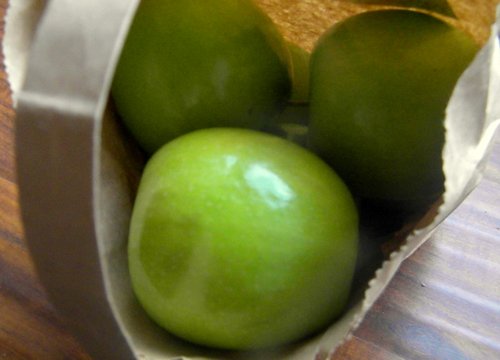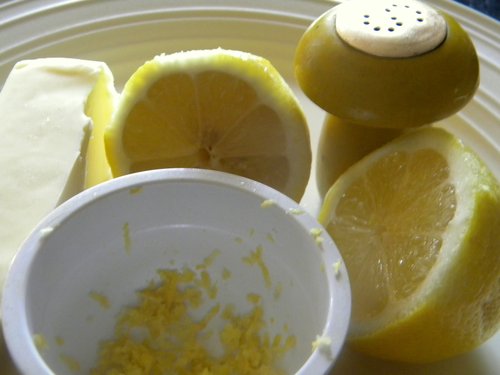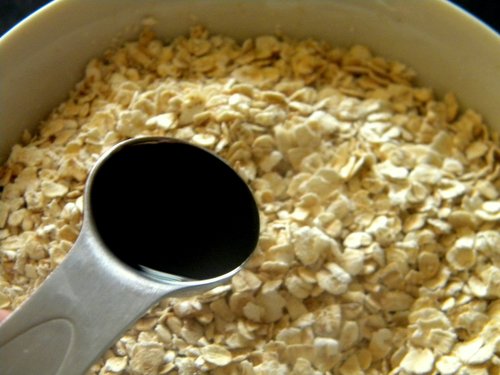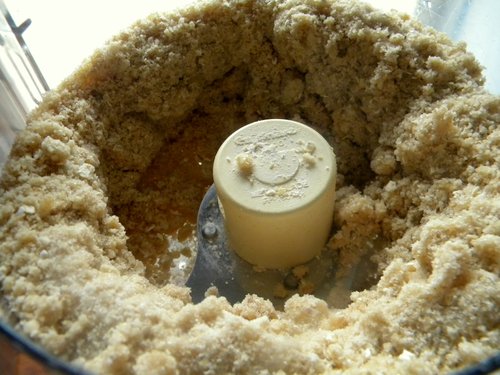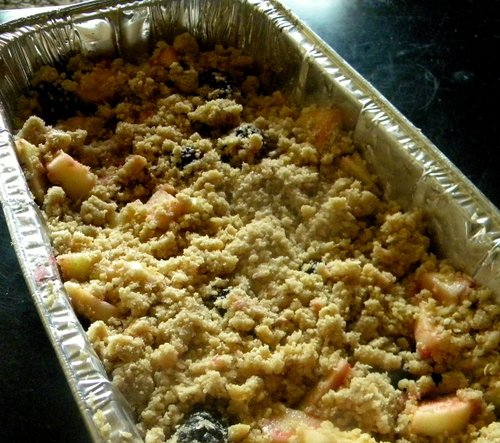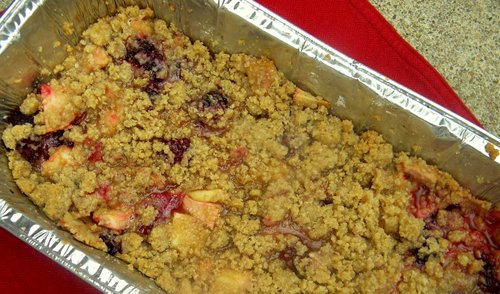Republican response to President Barack Obama?s plan to reduce gun violence has been peppered with misleading claims.
- Rep. Steve Stockman of Texas claimed, ?Gun bans and anti-gun laws have always led to one thing ? more gun violence.? But the majority of academic research on the effect of the federal assault weapons ban, as well as restrictive gun laws in several major cities, has found no such causal link.
- Rep. John Fleming of Louisiana condemned what he said was Obama?s plan to ?push? doctors to ask patients if there are guns in their homes. But Obama sought to ?clarify? that the federal health care law does not prohibit such conversations between doctor and patient.
- Stockman also claimed a parent ?may face a prison sentence? for giving his or her ?son his first hunting rifle,? referring to Obama?s call for universal background checks on gun sales. But the president?s proposal ? which would require congressional approval ? specifically says there should be ?common-sense exceptions for cases like certain transfers between family members.?
- Texas Gov. Rick Perry said the Second Amendment ?cannot be ? abridged by the executive power of this or any other president.? But all of Obama?s major proposals to restrict the sales of firearms and ammunition would require congressional approval and would not be carried out by executive fiat.
- Rep. Markwayne Mullin of Oklahoma falsely claimed that Obama?s plan includes ?23 executive orders? ? a ?nearly 15% increase in the total number of executive orders? issued by the president since taking office. In fact, Obama does not plan to issue any executive orders ? but he does propose 23 ?executive actions.?
In a speech on Jan. 16, the president laid out an ambitious plan to curb gun violence. Obama called on Congress to enact laws to require a universal background check for anyone trying to buy a gun, as well as the restoration of a ban of ?military-style assault weapons? and a 10-round limit for magazines.
Obama also announced that he would take 23 ?executive actions,? including initiatives such as launching ?a national safe and responsible gun ownership campaign? and issuing a presidential memorandum ?to require federal law enforcement to trace guns recovered in criminal investigations.?
A number of Republicans immediately pushed back against the president?s plan.
More Gun Laws = More Gun Violence?
Following the president?s press conference, Reps. Steve Stockman and Paul Gosar argued that gun bans and other gun restrictions enacted by various states and cities have led to more crime. But studies have failed to prove such causation.
In a press release issued on Jan. 16, Stockman of Texas stated, ?Gun bans and anti-gun laws have always led to one thing ? more gun violence.?
Gosar, a Republican from Arizona, echoed that sentiment in a press release:
Gosar, Jan. 16: One needs to look no further than the states with the toughest restrictions on firearms to see that they are the ones consistently ranking the highest in violent crime. When you limit an individual?s ability to lawfully purchase or carry firearms you are allowing only those with the intent to break the law to have weapons.
We reached out to Stockman?s office for support for his claim, and spokesman Donny Ferguson pointed us to the Department of Justice?s FBI crime statistics for the U.S.
?Crime decreased faster after the assault weapons ban was repealed than when the assault weapons ban was in place,? Ferguson said.
And, he said, crime has increased in several major cities after they enacted gun bans.
Studies on gun laws and crime rates have not shown a causal link ? proof that the law caused a change (up or down) in crime rates. So Stockman?s implication, that these laws caused a change in crime, hasn?t been shown. But even if we set aside causation, he?s still wrong to say that gun bans have ?always? led to more violence.
We?ll deal first with the federal assault weapons ban. The ban was enacted in 1994 as part of the Violent Crime Control and Law Enforcement Act of 1994, and was allowed to expire in 2004. Sen. Dianne Feinstein, a Democrat from California, introduced legislation on Jan. 24 to reinstate an assault weapons ban.
The question is, did the old assault weapons ban result in more gun violence, as Stockman claims? Academic studies show no such causation. And, in fact, one study found a decrease in crime immediately following the ban.
On her website, Feinstein cites a 1997 Department of Justice study conducted by Jeffrey Roth and Christopher Koper that she says found ?that the 1994 Assault Weapons Ban was responsible for a 6.7 percent decrease in total gun murders, holding all other factors equal.? But the report itself was not so unequivocal.
Roth and Koper, 1997: At best, the assault weapons ban can have only a limited effect on total gun murders, because the banned weapons and magazines were never involved in more than a modest fraction of all gun murders. Our best estimate is that the ban contributed to a 6.7 percent decrease in total gun murders between 1994 and 1995, beyond what would have been expected in view of ongoing crime, demographic, and economic trends. However, with only one year of post-ban data, we cannot rule out the possibility that this decrease reflects chance year-to-year variation rather than a true effect of the ban. Nor can we rule out effects of other features of the 1994 Crime Act or a host of state and local initiatives that took place simultaneously. Further, any short-run preventive effect observable at this time may ebb in the near future as the stock of grandfathered assault weapons and legal substitute guns leaks to secondary markets, then increase as the stock of large-capacity magazines gradually dwindles.
Ultimately, the authors concluded, ?The evidence is not strong enough for us to conclude that there was any meaningful effect.?
Feinstein noted that a follow-up study conducted by Koper for the University of Pennsylvania in 2004 found that ?the use of assault weapons in crime declined by more than two-thirds by about nine years after 1994 Assault Weapons Ban took effect.?
But again, the findings were more nuanced than Feinstein claims.
Koper, 2004: Although the ban has been successful in reducing crimes with AWs (assault weapons), any benefits from this reduction are likely to have been outweighed by steady or rising use of non-banned semiautomatics with LCMs (large capacity magazines), which are used in crime much more frequently than AWs. Therefore, we cannot clearly credit the ban with any of the nation?s recent drop in gun violence. And, indeed, there has been no discernible reduction in the lethality and injuriousness of gun violence, based on indicators like the percentage of gun crimes resulting in death or the share of gunfire incidents resulting in injury, as we might have expected had the ban reduced crimes with both AWs and LCMs.
Because the law allowed existing assault weapons to be grandfathered in, it ?guaranteed that the effects of this law would occur only gradually over time? and ?thus [it is] premature to make definitive assessments of the ban?s impact on gun violence.?
So the most definitive studies of the assault weapons ban did not conclude that the laws were responsible for decreased violent crime, but neither did they find that it increased crime, as Stockman claimed.
The claim that strict gun laws passed in cities like Washington D.C., Chicago and New York City led to increased gun violence is also contradicted by some studies (but not all). Crime rates have been falling everywhere since the early 1990s, and the question then is whether they have fallen more slowly in those cities relative to other cities that don?t have the same laws.
A 1991 study in the New England Journal of Medicine on the effects of gun laws in Washington, D.C. ? where in 1976 the mayor signed a law restricting the possession of firearms to persons who obtain registration certificates ? looked at the roughly 10 years before and after the law took effect and concluded there was a marked decrease in the frequency of suicides and homicides after the law. Critics noted that the study period,? from 1968 to 1987, conveniently left out ensuing years during which homicides soared in the nation?s capital, spiking dramatically in the early 1990s. (Homicide rates then began falling after that.)
Despite the rise in homicides in the years immediately after their study period, the authors stuck by their conclusions.
Loftin, Colin; McDowall, David; Wiersema, Brian; and Cottey, Talbert J., 1991: The facts that the frequency of gun related homicides remained high in the District of Columbia after the gun law went into effect and that there have been dramatic increases in homicides very recently are not incompatible with the argument that the restrictive licensing law had a preventive effect on homicides. The number of homicides is determined by many factors other than legal restrictions on access to guns. Since the economic and social conditions in the district are similar to those associated with high rates of homicide in other cities, it is not surprising that the frequency of homicide remained high in the District of Columbia or that in the district, as in many other cities in the late 1980s, there were dramatic increases in homicides attributable to the spread of ?crack? cocaine. It is reasonable to assume that the restrictions on access to guns in the district continued to exert a preventive effect even as homicide rates were driven up by conflict over drugs and other factors.
However, economist John Lott, author of the book ?More Guns Less Crime,? and others, argue that gun bans are counter-productive because they make it more difficult for law-abiding people to defend themselves. Lott points to huge increases in murder rates in Washington, D.C. and Chicago ? even after those cities passed strict gun laws ? as evidence suggesting the gun control laws have not reduced crime over the long term.
David Hemenway, director of the Harvard Injury Control Research Center, cautioned that part of the problem in measuring the success of the gun laws in Chicago and D.C. is the ready availability of guns in neighboring areas.
Hemenway told us that there is a great deal of evidence that suggests a lot of the problem with gun violence is due to more guns. The problem for researchers, he said, is that it?s hard to find a very big ? statistically significant ? effect from many of the gun policies. It is hard to single out the effect of just one policy, one way or the other, he said.
?There are a variety of studies that suggest where there are stronger gun laws, you have less violence,? he said. ?But it depends on how compelling you think they are. There is no evidence the bans had this wonderful effect. But I don?t know of any studies ? any good ones ? that show when guns are banned, crime increases.?
?Pushing? Doctors to Ask About Guns?
Rep. John Fleming, a family physician, issued a statement condemning the president?s plan to ?push? doctors to ask patients if there are guns in their homes. But Obama made no such proposal.
Rather, Obama said that he would seek to ?clarify? that the Patient Protection and Affordable Care Act does not prohibit doctors from asking patients about guns in their homes.
In response, Fleming issued this statement:
Fleming, Jan. 16: I came to Congress as a family physician with great concerns about the federal government intruding on the doctor-patient relationship. By his executive actions today, President Obama is pushing the government further into the exam room. He?s trying to press doctors into government service by pushing them to ask patients, even child patients, if there are guns in their home. After more than thirty years of operating a family practice, I can tell you it should not be the business of a family physician to take inventory of the guns in a patient?s home.
There are existing laws which ensure that doctors alert law enforcement to criminal activities that they become aware of in the course of their practice. And, we certainly need to be sure that people who are a known danger to others do not have access to guns. But, calling on doctors to ask patients if they have guns in their homes is another step toward the nanny state that Washington liberals dream about.
For months, FactCheck.org readers have been sending us viral emails that claimed the Patient Protection and Affordable Care Act requires doctors to ask patients whether they own a gun. One of the most popular versions of the email speculates that this new requirement is ?either an insurance issue or government intervention.?
However, contrary to those claims, the language on firearms in the health care law was added at the request of Sen. Harry Reid to protect gun owners? rights. Specifically, the law (page 19) makes clear that wellness programs ?may not require the disclosure or collection of any information relating to ? the lawful use, possession, or storage of a firearm or ammunition by an individual.? Further, the law states that it does not authorize the collection of data or maintenance of records related to gun ownership. And the law spells out that insurance companies may not increase premium rates based on whether someone owns a firearm.
As explained by the nonpartisan Kaiser Family Foundation: ?[T]he health law?s wellness programs can?t require participants to give information about guns in the house. It also keeps the Department of Health and Human Services from collecting data on gun use and stops insurance companies from denying coverage or raising premiums on members because of gun use.?
The law does not, however, prohibit doctors from asking about guns in the household either, though Kaiser said some health professionals fear the language in the law may? encourage physicians to ?avoid the topic altogether, inhibiting a full conversation about firearms hazards.?
That was apparently enough of a concern that President Obama addressed it as part of his recently unveiled plan to curb gun violence. Among 23 ?executive actions? Obama said he would take was: ?Clarify that the Affordable Care Act does not prohibit doctors asking their patients about guns in their homes.?
According to a fact sheet circulated by the White House:
White House Fact Sheet, Jan. 16: Doctors and other mental health professionals play an important role in protecting the safety of their patients and the broader community by reporting direct and credible threats of violence to the authorities. But there is public confusion about whether federal law prohibits such reports about threats of violence. The Department of Health and Human Services is issuing a letter to health care providers clarifying that no federal law prohibits these reports in any way.
At the state government level, seven states ? Alabama, Florida, Minnesota, North Carolina, Oklahoma, Tennessee and West Virginia ? have considered legislation that would limit the ability of physicians to have conversations with patients about gun ownership. Only Florida passed such a law, but a federal judge blocked Florida from enforcing it, saying it would violate the First Amendment rights of doctors.
Prison for Dad Giving Son His ?First Hunting Rifle??
Stockman also claimed a parent ?may face a prison sentence? for giving his or her ?son his first hunting rifle,? referring to Obama?s call for universal background checks on gun sales. But the president?s proposal ? which would require congressional approval ? says there should be ?common-sense exceptions for cases like certain transfers between family members.?
Stockman?s statement, which was issued on the day Obama announced his proposal, drew media attention for threatening to file articles of impeachment against the president. But it also contained this:
Stockman, Jan. 16: Among the Executive Orders issued are tracking of your firearms, which creates a de facto national gun registry, and a White House demand for laws regulating the private transfer of firearms. In other words, if you give your son his first hunting rifle, you may face a prison sentence if you fail to get approval from the government.
A 15-page document released by the White House makes it clear that the president is not proposing to send a father to prison merely for giving his son a hunting rifle as a gift.
?Now Is The Time,? Jan. 16: Congress should pass legislation that goes beyond just closing the ?gun show loophole? to require background checks for all firearm sales, with limited, common-sense exceptions for cases like certain transfers between family members and temporary transfers for hunting and sporting purposes.
The idea of providing such exceptions is consistent with the president?s past statements on hunting as a tradition in the United States. In a speech to the National Urban League Convention in July, Obama said that ?we recognize the traditions of gun ownership that passed on from generation to generation -? that hunting and shooting are part of a cherished national heritage.? Such comments usually proceed a call for greater gun restrictions, as it did in this case, but with ?common-sense exceptions.?
Abridging Second Amendment by ?Executive Power??
Texas Gov. Rick Perry, who sought the Republican presidential nomination in 2012, was among the critics of Obama?s gun plan. In a statement, he said the ?Second Amendment to the Constitution is a basic right? that ?cannot be ? abridged by the executive power of this or any other president.? But the most sweeping of the president?s proposals require congressional action. They would not be imposed by executive fiat, as Perry suggests.
The president said he would take 23 ?executive actions,? many of which are fairly innocuous, such as launching ?a national safe and responsible gun ownership campaign? and directing two cabinet officers to launch a ?national dialogue? on mental health.
The president?s major proposals all require congressional approval. They include banning so-called ?assault weapons,? restricting gun magazines to no more than 10 rounds, banning the possession of armor-piercing bullets, and requiring criminal background checks for all gun sales, with limited exceptions.
Even the president?s nomination of B. Todd Jones to be the permanent director of the Bureau of Alcohol, Tobacco, Firearms and Explosives would require Senate approval.
Sen. James Inhofe ? a Republican who opposes an assault weapons ban ? said most of the planned executive actions are ?common-sense changes that are within the president?s current powers to implement.? Inhofe took issue with the legislation proposals, not the executive actions.
At the risk of stating the obvious, the Second Amendment can be curtailed by law, as Supreme Court Justice Antonin Scalia explained in District of Columbia v. Heller, which overturned the district?s ban on handguns while recognizing the constitutionality of existing restrictions and limitations on firearms.
Scalia, June 26, 2008: Although we do not undertake an exhaustive historical analysis today of the full scope of the Second Amendment, nothing in our opinion should be taken to cast doubt on longstanding prohibitions on the possession of firearms by felons and the mentally ill, or laws forbidding the carrying of firearms in sensitive places such as schools and government buildings, or laws imposing conditions and qualifications on the commercial sale of arms. We also recognize another important limitation on the right to keep and carry arms. Miller said, as we have explained, that the sorts of weapons protected were those ?in common use at the time.? 307 U. S., at 179. We think that limitation is fairly supported by the historical tradition of prohibiting the carrying of ?dangerous and unusual weapons.?
Did Obama Issue 23 Executive Orders?
Another Republican falsely claimed that Obama?s plan included ?23 executive orders aimed at tightening federal control over gun rights? ? a ?nearly 15% increase in the total number of executive orders for his term.? In fact, the president does not plan to issue any executive orders ? but he does, as we have already mentioned, propose 23 ?executive actions.?
Rep. Markwayne Mullin of Oklahoma, Jan. 16: Today?s press conference featured 23 executive orders aimed at tightening federal control over gun rights. In President Obama?s first term he has issued 144 total executive orders. Today?s total signifies a nearly 15% increase in the total number of executive orders for his term on this one issue.
A common criticism in some conservative circles is that the president has abused his office by issuing too many executive orders ? a power given to the president under Article II of the Constitution, which created the executive branch, and from presidential precedent dating to George Washington. We wrote about one bogus viral email that falsely claimed that the president issued more than 900 executive orders ? blaming Obama for executive orders that were signed by other presidents, from John F. Kennedy to Gerald Ford.
Obama issued 144 executive orders in his first term, as Mullin says. That?s 27 fewer than the 171 executive orders his predecessor, President George W. Bush, issued in his first term.
Obama?s gun violence plan does include three?presidential memos, which are directives to federal department and agency heads. The memos direct:
? Robert Farley and Eugene Kiely
Also Read
Source: http://news.yahoo.com/factchecking-gop-response-obama-gun-plan-183742071--politics.html
jason russell norfolk state st patrick s day parade duke invisible children garbage pail kids st bonaventure


